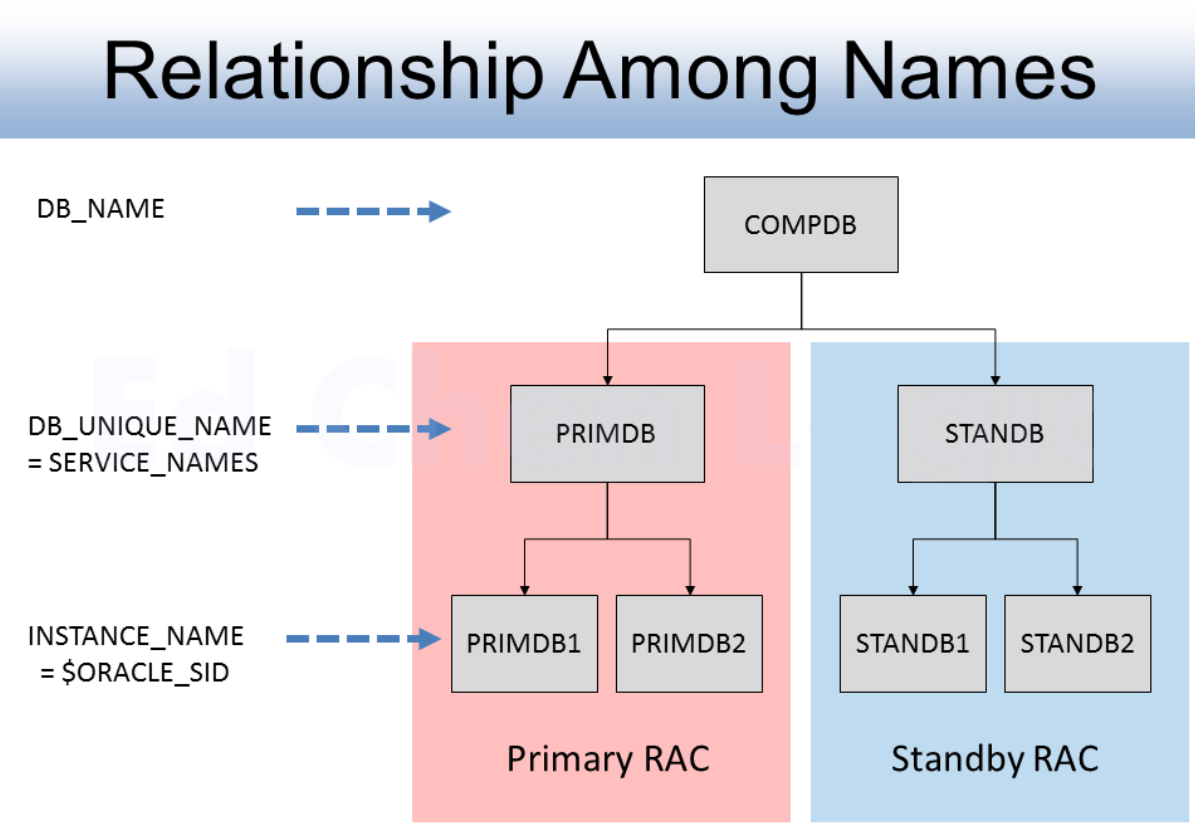The relationship about DB_NAME, DB_UNIQUE_NAME, SERVICE_NAMES, INSTANCE_NAME, and $ORACLE_SID
这是Google肥来的博文,需要翻译请留言。。。

Names Among MAA
Under Oracle Maximum Availability Architecture (MAA), we might be confused about various kinds of name. Here I try to clarify these names by chart and table.
DB_NAME (Enterprise-wide Name)
You must set this parameter for every instance in order to startup the database. If you didn’t assign DB_NAME at installation-time, then DB_NAME = $ORACLE_SID
DB_UNIQUE_NAME (Site-wide Name)
If you didn’t assign DB_UNIQUE_NAME in the parameter file at startup-time, then DB_UNIQUE_NAME = DB_NAME
If you didn’t assign SERVICE_NAMES in the parameter file at startup-time, then SERVICE_NAMES = DB_UNIQUE_NAME
INSTANCE_NAME (Server-wide Name)
If you didn’t assign INSTANCE_NAME in the parameter file at startup-time, then INSTANCE_NAME = $ORACLE_SID
Naming Scope and Default Values
| Parameter Name | Name Scope | Default Value | Level |
|---|---|---|---|
| DB_NAME | Enterprise-wide | = $ORACLE_SID (Installation-time) |
Database |
| DB_UNIQUE_NAME | Site-wide | = DB_NAME (Startup-time) |
Role |
| SERVICE_NAMES | Site-wide (or Enterprise-wide) | = DB_UNIQUE_NAME (Startup-time) |
Role (or Database) |
| INSTANCE_NAME | Server-wide | = $ORACLE_SID (Startup-time) |
Instance |
| $ORACLE_SID | Server-wide | N/A | Instance |
The above featured image illustrates you a hierarchy tree for better understanding on all of these names. For more details, you may check DB_NAME and DB_UNIQUE_NAME in Oracle documentation.


